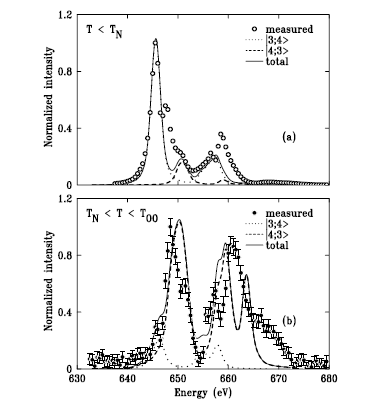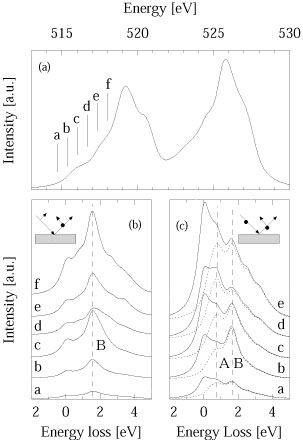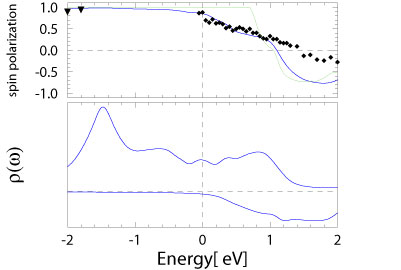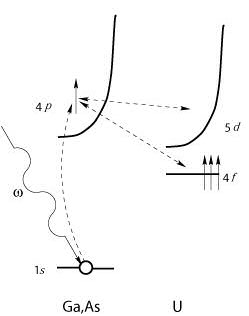| Highlights |
|
Soft X-Ray Resonant Diffraction Study of Magnetic and Orbital Correlations in a Manganite Near Half Doping K. J. Thomas, J. P. Hill, S. Grenier, Y-J. Kim, P. Abbamonte, L.Venema, A. Rusydi, Y. Tomioka, Y. Tokura,D. F. McMorrow, G. Sawatzky, and M. van Veenendaal (6.2004) Phys. Rev. Lett. 92, 237204 (2004). We have utilized resonant x-ray diffraction at the Mn LII/III edges in order to directly compare magnetic and orbital correlations in Pr0.6Ca0.4MnO . Comparing the widths of the magnetic and orbital diffraction peaks, we find that the magnetic correlation length exceeds that of the orbital order by nearly a factor of 2. Furthermore, we observe a large (~3 eV) spectral weight shift between the magnetic and orbital resonant line shapes, which cannot be explained within the classic Goodenough picture of a charge-ordered ground state. To explain the shift, we calculate the orbital and magnetic resonant diffraction line shapes based on a relaxed charge-ordered model. |
|
Polarized Resonant Inelastic X-ray Scattering in NaV2O5, M. van Veenendaal and A. J. Fedro (5.2004) Phys Rev. Lett. 92, 219701 (2004) Resonant Inelastic X-ray Scattering has been increasingly used to study strongly correlated systems. Zhang et al. [Phys. Rev. Lett. 88, 077401 (2002)] used RIXS to study valence excitations in the ladder compound NaV2O5. We have shown the importance of including the core-hole potential and polarization effects in the interpretation of their experiments. We find that the feature, Zhang et al. ascribe to an excitation across the Hubbard gap is in fact not the lowest excitation state and should be ascribed to a local dd-transition. |
|
Spin Polarization in CrO2: Competition between Quasiparticle and Local- Moment Behavior Michel van Veenendaal and A. J. Fedro (7.2004) Phys. Rev. B 70, 012413 (2004). We show that inclusion of the competition between quasiparticle and local-moment behavior in CrO2 is necessary to obtain good agreement between the calculated and experimentally observed spin polarization. By going beyond a single Slater determinant description, we find a spin polarization of close to 100% near the Fermi level reflecting quasi-particle behavior. At energies higher than 0.1-0.2 eV above the Fermi level, the local moment character dominates and the spin polarization is reduced to approximately 50%. |
|
Resonant Magnetic Scattering at Nonmagnetic Ions M. van Veenendaal(11.2003) Phys. Rev. B 67, 134112 (2003). An explanation is offered for the surprising effect of Resonant Magnetic Scattering at nonmagnetic ions, such as Ga in UGa3 and As in UAs. It is shown that the excited electron probes the neighboring magnetic ions and is thereby sensitive of the local Uranium moment. |
|
Polarization dependence of x-ray emission spectroscopy |




